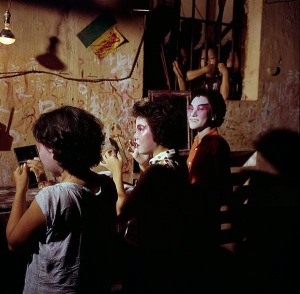
Chinese Opera actresses put on make-up before a performance.
<<Story related to the information>>
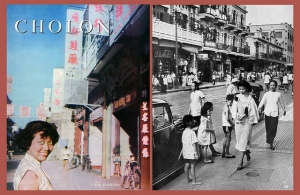
CHOLON 1955 – La Rue des Marins – Đồng Khánh
street. The book “CHOLON” was written by Jean-Michel de Kermadec with pictures from Raymond Cauchetier. It was printed in December 1955 by “‘Imprimerie Française d’Outre-Mer” (IFOM) 3, Rudyard-Kipling Street (Nguyễn Siêu street) in Saigon.
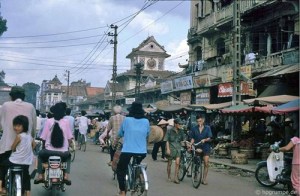
Chợ Lớn (The Big Market) in Chinese quarter in Saigon before the Fall of Saigon
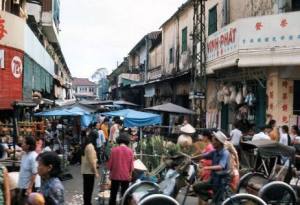
A market in Chợ Lớn (The Big Market) – another name for the Chinese quarter in Saigon in 1965.
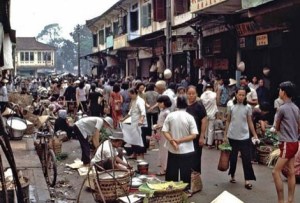
A market in Chợ Lớn in 1966.
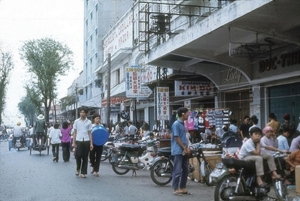
A street in Chợ Lớn in 1970.

A street in Chợ Lớn.
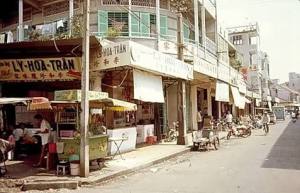
A street in Chợ Lớn.

A Chinese herbal medicine shop.

A Chinese herbal medicine shop in Hội An in 1950.

The road in front of a Chinese Opera theatre named Hào Huê in Chợ Lớn – the Chinese quarter.

Lanterns with faces of Chinese Opera characters

A Chinese actor put on make-up before a performance.

A Chinese Opera actor after finishing his make-up.

A Chinese actress lighted up incense in front of the Opera God’s altar before a performance.

A pagoda in Chợ Lớn in 1954.

A Chinese temple.

Inside a Chinese temple in 1961.

Inside a Chinese temple in the 1960s, a woman consulted the clairvoyant who wrote her horoscope.

A Chinese family at a ceremony.

A Chinese family at a ceremony.

A Chinese family altar.

A Chinese woman in front of her house with many altars for the different Gods inside her house.

A Chinese man selling dessert made of soft tofu in sweet ginger soup.

The Chinese dessert made up of soft tofu in sweet ginger soup.

Another common Chinese street food – chí mà phủ – made of ground black sesame seeds in sweet soup.

A Chinese street vendor selling bánh hấp made of two halves baked, hollowed and round cases put on top of and inside the other after filing one case with shredded coconut.”

A Chinese street vendor selling bò bía which are fresh rice rolls containing dried shrimps, slices of steamed Chinese dried sausage, thin slices of omellet, shredded carrot, shredded jícama (yam bean) and basil leaves. These rolls are eaten with hoisin sauce.

Bò bía – fresh rice paper rolls contained slices of dried Chinese sausage, strips of omelet, dried shrimp, basil leaves, shredded carrot and yam bean, and dipped in hoisin sauce with crushed roasted peanut.

A street vendor selling pig’s offal cooked in Chinese herbs.

A street vendor selling Chinese steamed rice cakes.

A popular street food snack for children, rice paper wrapped around small candy rolls placed underneath shredded fresh coconut and black sesame seeds.

A Chinese street food stall selling noodle soups.

Chinese street food stall selling beef noodle soups with tripe and intestines.

A Chinese woman selling handmade fans and brooms.
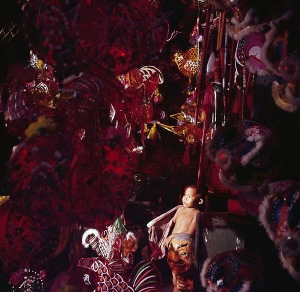
A Chinese shop selling lanterns during the Mid-Autumn Festival.
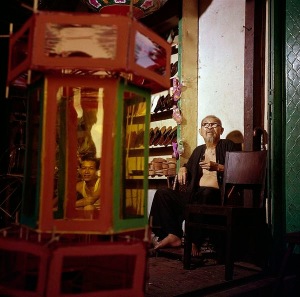
A Chinese shoe shop.

A workshop where lion heads used in lion dance were made.

Inside a Chinese family making Opera headpieces,

A Chinese herbal tea street vendor.

Women enjoying Chinese herbal tea in 1955.

In a 1965 report from the Sài Gòn Customs Department, the Chinese in South Vietnam controlled 80% of rice, 78% of food, chemistry and textile industry, 90% of exports and imports and nearly 100% in commerce. Tạ Vinh, a young Chinese business man in his 30s, was executed under the order of the then Prime Minister Nguyễn Cao Kỳ in 1966 for the crime of economic sabotage as a deterrence to other Chinese business men of economic crimes.

AP and the news of Chinese business man Tạ Vinh executed in 1966.
<<Link to YouTube video of Tạ Vinh’s execution>>

Tạ Vinh’s wife tried to meet her husband before execution.

Tạ Vinh’s wife before her husband’s execution. Tạ Vinh left behind 7 children.

At 7:30am 10/9/1975, the Communists arrested those Chinese business men who were considered ‘Kings without the visible thrones’, who manipulated the market through monopoly: Mã Hỷ – King of rice, Lưu Tú Dân – King of fabrics, Bùi Văn Lự – King of car part import, Hoàng Kim Quy – King of barbed wire for the American Army, Trần Thiện Tứ – King of coffee, …. This is a photo of “people” who supported the Communists’ action.

A Chinese family.

A block of houses for Chinese on the first floor.

A Chinese man on a balcony.
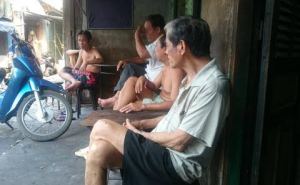
Chinese men relaxing in front of their houses.

A Chinese woman in 1961.

A Chinese young girl studying in front of her house.

A Chinese old woman in her traditional costume.

A Chinese noodle soup restaurant.

Inside a Chinese restaurant.
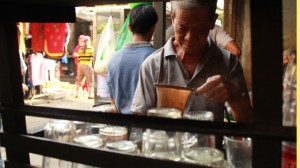
A Chinese street vendor making coffee with a cloth filter.

A Chinese cook making coffee with cloth filter.

A Chinese grocery shop.

A Chinese grocery shop.

A road lined up with shops selling Chinese roasted pigs, ducks and chickens as well as dried sausages.

A Chinese shop selling roasted pigs, ducks and chickens.
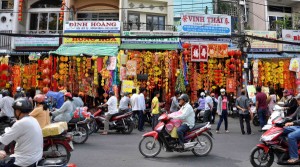
A street full of Chinese stalls selling decorative things for Chinese New Year.

A Chinese shop selling Chinese greetings and wishes for Chinese New Year.

A Chinese funeral procession followed by grieving relatives in 1960.

Roasted pig for the burial ceremony be place on the leading funeral carriage.

A Chinese funeral procession with the music band in 1960.

A Chinese funeral procession with the votive paper-made shoulder carriage (sedan chair) to be burned for the dead to use in their afterlife.

Chinese funeral lanterns to be hung in front of the house where the coffin is placed.

Votive paper-made servants to be burned to serve the dead in their after life.

A Chinese funeral procession with trucks carrying sympathy notes. These trucks later would be used to carry the relatives to the cemetery or the crematorium.

Chinese Opera actresses put on make-up before a performance.







































































Pingback: Interview: hiMe printed the book of her story as a Refugee | Blookup Blog
What an amazing collection of photos. It is good to keep memories – even the bad ones.
LikeLike
Thanks for reading!
LikeLike